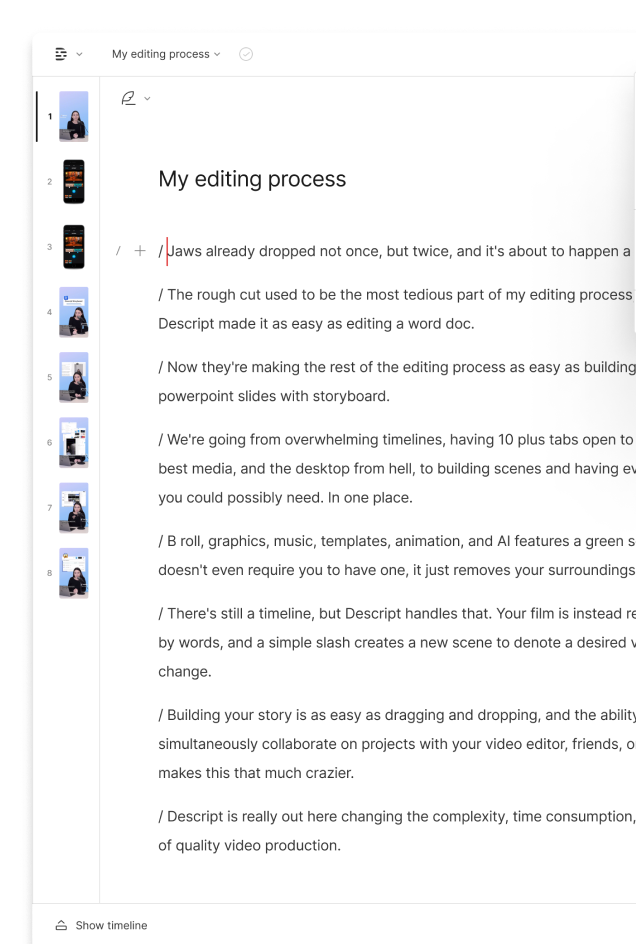What type of content do you primarily create?




You can’t copyright AI-generated images, writing, video, or anything, according to a ruling by the U.S. Copyright Office. So if somebody else wants to reuse something you made using ChatGPT, DALL-E, or any other AI tools, they can and there’s nothing you can do about it, legally (you could do something illegal, like smash their coffee maker with a hammer, but that’s risky, and doesn’t scale).
The good news: this is just the first step in the development of the law around who owns AI-created or -assisted content. The Copyright Office’s decision will almost certainly be appealed, and the question will wind its way through the court system, potentially all the way to the Supreme Court.
Here’s an overview of what the Copyright Office’s decision means for creators, and what to expect from the legal system in the coming years (yeah, the law moves in years).
What the Copyright Office said
The ruling came on a copyright application from Kristina Kashtanova, the author of a graphic novel who’d used the AI image-generation tool Midjourney to create the illustrations in a book she wrote. The Copyright Office — a bunch of government lawyers who evaluate copyright applications based on all the existing law — decided she could protect the book itself (the story, and the story plus the illustrations) but not the illustrations.
Essentially, they’re saying that a creator doesn’t have enough creative control over a generative AI tool to claim its output as their own. More specifically, the Copyright Office said that because you can’t predict exactly what a generative AI tool will create, you can’t copyright it.
The emphasis on predictability surprises Lisa Oratz, a veteran IP lawyer at Perkins Coie, which is a big law firm. (It’s worth mentioning that she’s also Descript’s lawyer). Predictability had never been a factor in determining human authorship before. “It’s a new standard,” she says.
The Copyright Office equated the text prompts to telling an artist about an idea you have for a painting, then trying to copyright the work after they paint it. That makes sense if all you provided the artist was ideas, because ideas are not protectable and the painter did the creative work that gives them “authorship,”
Lisa says she would’ve expected the Copyright Office to focus more on the nature of the inputs — the prompts that Kashtanova wrote in Midjourney to get the images she wanted. The Copyright Office could have looked at the human involvement the artist described in their process and found that it wasn’t detailed enough to constitute sufficient human authorship — the key to determining whether a creator can claim a work as their own.
While that kind of human creativity has always been required for copyright protection, she says, the level of the creativity required has been pretty minimal. So Lisa believes there could be a decent argument that the prompts in this case were sufficiently detailed to meet the standard.
Uncharted territory
The question the Copyright Office, and soon the courts, are essentially trying to answer here: how much human involvement does a creator have to exert over a machine to claim ownership of its output?
This isn’t the first time the legal system has wrestled with that question. It first came up when cameras were invented; the argument then was that you couldn’t protect a photograph as your own, since the machine was the one capturing the image.
But the Supreme Court rejected that idea. The camera didn’t control what was in the frame, or how it was positioned, lit, exposed, and so on. The photographer, a human, controlled all that stuff, which was sufficient for the photographer to claim authorship, and gave them the right to copyright their photos. That was nearly 150 years ago. The human authorship requirement comes from the Constitution, which gives patent protection to inventors and copyright protection to authors. It’s still the standard today.
The creator in this generative AI case, Kashtanova, tried to compare the creative input she she put into things like prompt design to the things the long-ago Supreme Court found sufficient for photographers. The Copyright Office, surprisingly, introduced this predictability standard instead.
Lisa questions whether that standard will hold up under scrutiny. After all, there’s some unpredictability involved in taking photos, too — the wind may blow a subject’s hair, or the camera may capture something the photographer didn’t notice — or with making a movie — the actors may do things a producer or director didn’t expect — but those works can obviously be protected by copyright.
Advice for creators
A few days after the Copyright Office’s decision, the lawyer representing Kristina Kashtanova wrote an article tearing into the new “predictability” standard. He used the amusing analogy of Jackson Pollock, who made his art by flinging paint around and seeing what happened; nobody questioned his ability to copyright those works.
But in a more salient point for creators, the lawyer argued that the Copyright Office was “incorrectly focusing on the output of the tool rather than the input from the human.” Lisa tends to agree. Eventually, she believes — or at least hopes — the courts will too. Or it may be that Congress will step in and pass new legislation that lays out how the ownership of AI-produced content will be determined.
So if you’re using generative AI tools to create any part of your content — the cover art for your podcast, the background for your video, anything — the best thing you can do is to be sure you’re employing as much human creativity in the process as possible. This might mean writing prompts with as much detail as possible — well beyond just suggesting ideas. You’ll want to be able to show you had a specific expression of your ideas in mind, and you just used the AI as a tool to generate it.
“‘A dinosaur in a teacup’ probably wouldn’t be specific enough,” Lisa says. “But ‘a purple dinosaur with flowing yellow hair taking a bath in a porcelain teacup that has a picture of a pink horse’ might be.”
Of course, the line between what is merely an idea and what’s a specific expression of that idea is subjective, so it may be difficult to know whether what you have added rises to the level of something protectable. We can probably expect things to remain fairly murky, at least for a while.
For now, Lisa warns that it is important to be aware that even highly detailed involvement in the process may not be sufficient to make the output protectible, as the Copyright Office has seemingly set a very high bar. So there may not be much you can to do prevent others from copying AI-generated output. That’s a key consideration when you’re deciding where and how to use generative AI in your creative process.
A final note: as Lisa points out, the Copyright Office did indicate that if someone sufficiently modifies generated output, that could be protectable. So, If you’re using generative AI as a starting point — e.g., using ChatGPT to create a rough draft and then re-writing it for your own voice — be sure you document the changes you made before you try to file for copyright protection, and then explain it in the application.




































